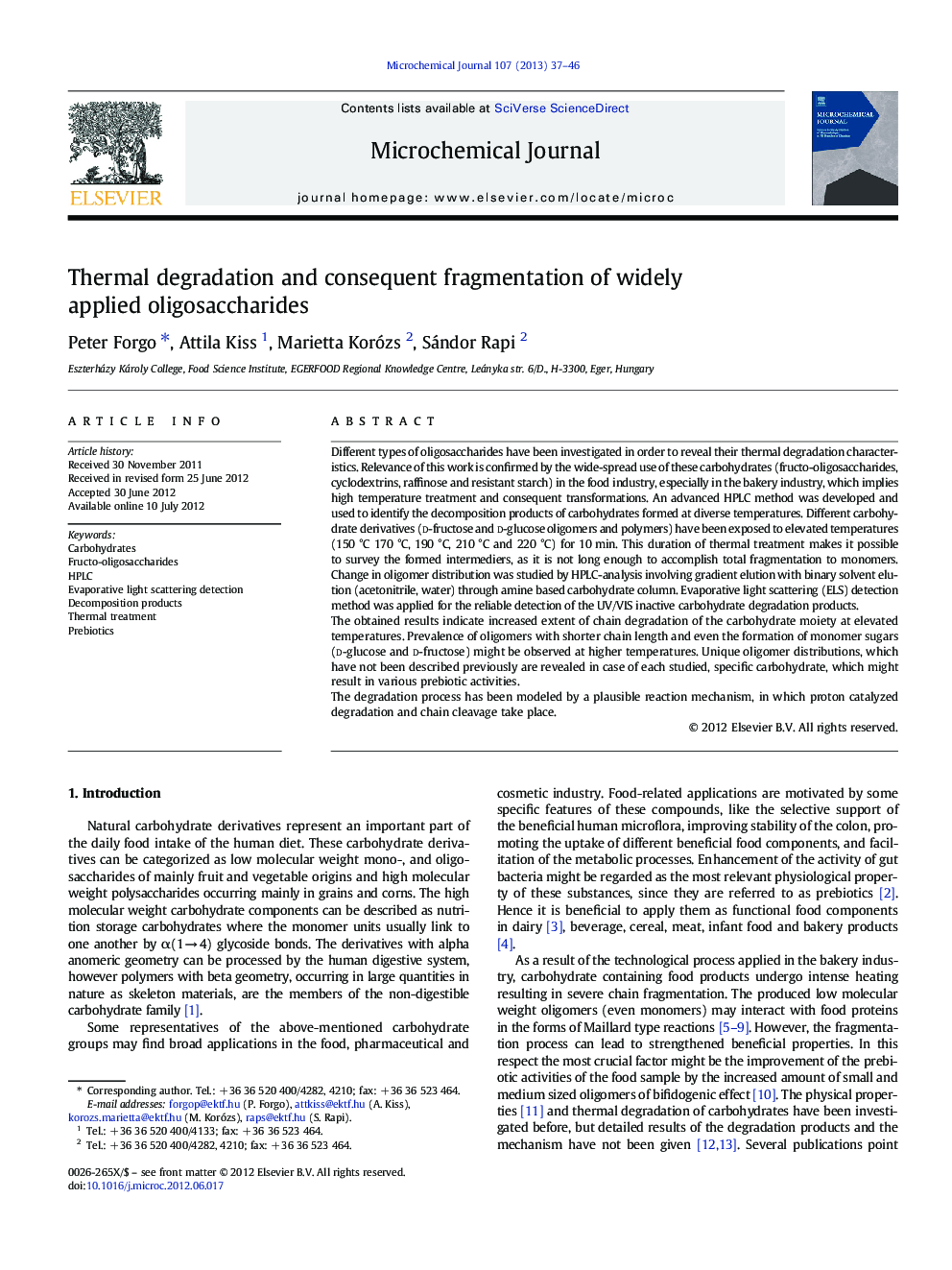| کد مقاله | کد نشریه | سال انتشار | مقاله انگلیسی | نسخه تمام متن |
|---|---|---|---|---|
| 1227855 | 1494887 | 2013 | 10 صفحه PDF | دانلود رایگان |

Different types of oligosaccharides have been investigated in order to reveal their thermal degradation characteristics. Relevance of this work is confirmed by the wide-spread use of these carbohydrates (fructo-oligosaccharides, cyclodextrins, raffinose and resistant starch) in the food industry, especially in the bakery industry, which implies high temperature treatment and consequent transformations. An advanced HPLC method was developed and used to identify the decomposition products of carbohydrates formed at diverse temperatures. Different carbohydrate derivatives (d-fructose and d-glucose oligomers and polymers) have been exposed to elevated temperatures (150 °C 170 °C, 190 °C, 210 °C and 220 °C) for 10 min. This duration of thermal treatment makes it possible to survey the formed intermediers, as it is not long enough to accomplish total fragmentation to monomers. Change in oligomer distribution was studied by HPLC-analysis involving gradient elution with binary solvent elution (acetonitrile, water) through amine based carbohydrate column. Evaporative light scattering (ELS) detection method was applied for the reliable detection of the UV/VIS inactive carbohydrate degradation products.The obtained results indicate increased extent of chain degradation of the carbohydrate moiety at elevated temperatures. Prevalence of oligomers with shorter chain length and even the formation of monomer sugars (d-glucose and d-fructose) might be observed at higher temperatures. Unique oligomer distributions, which have not been described previously are revealed in case of each studied, specific carbohydrate, which might result in various prebiotic activities.The degradation process has been modeled by a plausible reaction mechanism, in which proton catalyzed degradation and chain cleavage take place.
► Thermal degradation study (150 °C – 210 °C) of carbohydrate derivatives.
► Identification of degradation products by HPLC methods using evaporative light scattering detection technique.
► Using low molecular weight monomers and oligomers as standard materials.
► Determination of different degradation product distribution.
Journal: Microchemical Journal - Volume 107, March 2013, Pages 37–46